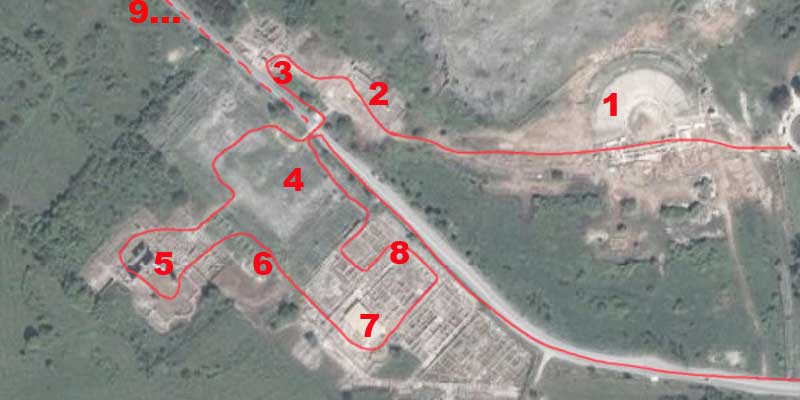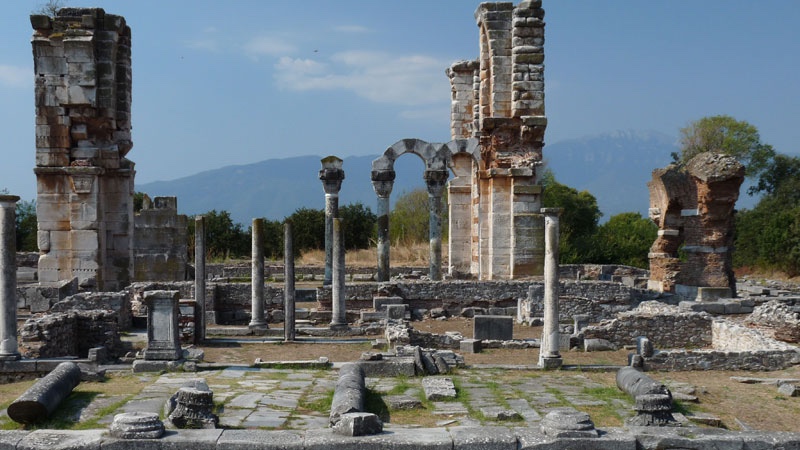Profile
Do your own walking tour of Philippi! Here is an easy to follow map and some information about the things you will see.

1. Theatre
The Roman style theatre was first built by probably Philip II the king of Macedonia in the middle of the 4th century BC. The Romans made alterations in the 2nd and 3rd centuries AD. Sometimes in the summer they use the theatre for drama festivals.

2. Basilica A
A 5th century AD Basilica that was destroyed shortly after being built by an earthquake.
3. Paul’s prison
As you descend the marble stairs from Basilica A towards the large Roman forum, you will see a fenced off water cistern. The walls contain frescoes, which confirm that this had been used as a chapel. Traditionally it is claimed that this was used as the prison cell to hold Paul and Silas, but it is unlikely that the prison would have been located in this part of Philippi.

4. Forum
As you cross the road, you see the sprawling Roman forum built in the 2nd century AD. The forum was built along the Via Egnatia to serve as the administrative and commercial center of Philippi. It consisted of a central square surrounded by shops and temples. Ruins can still be view of the temples on the west and east sides of the forum.

5. Basilica B
This was the site of the Greek agora (much like the Roman forum). In 550 AD, the agora was demolished to build Basilica B also called the Direkler (Turkish name for pillars). Four massive pillars made of Roman green marble supported a domed roof. As a second dome was being constructed, the walls collapsed from the weight and the basilica was never dedicated.
6. Commercial street
In between the Roman forum and Basilica B runs a commercial street parallel to the main road. If you follow this street eastward you will come to the Basilica of Paul.
7. Basilica of Paul/Octagon
In the 4th century AD the Christian community was given permission to build a church. An inscription tells that a bishop by the name of Porphyrios made a mosaic floor in the Basilica of Paul. Still in the 4th century a new church was built on this spot in the shape of an octagon. It survived until the 7th century.
8. Via Egnatia
Heading north back in the direction of the theatre you will see a stone paved street lining the road. This is the Via Egnatia, which passed through the walled city of Philippi. This would have been the main street of Philippi going in an east/west direction. To the north of the Via Egnatia stood the theatre.
9. Lydia’s prayer place
Following the road to the west, you exit what was once the western gate of Philippi.
Just outside of town you come to a small river where there is a church and a baptistery. This is the traditional spot where the Apostle Paul met Lydia, the first person in Europe to convert to Christianity. Read more about Apostle Paul in Philippi.

